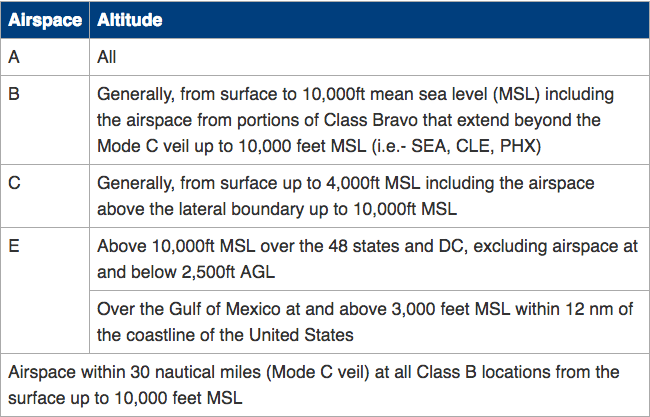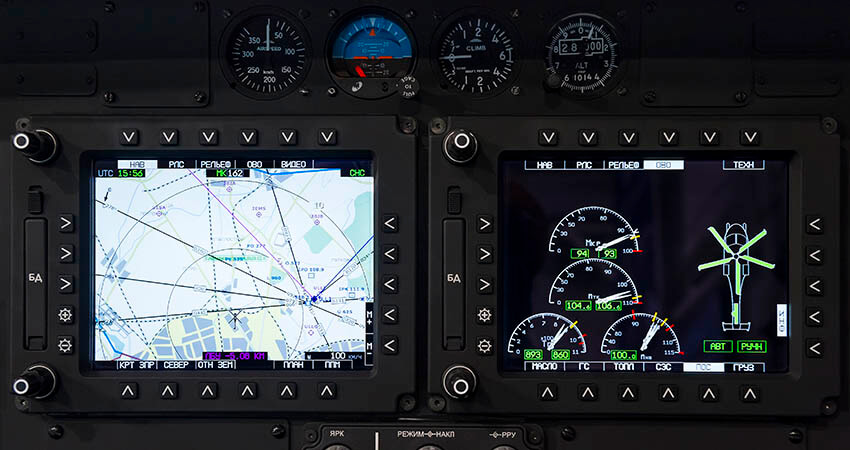CTS has the latest on ADS-B requirements and what it means for your operation.
With much of the US and many other countries mandating a shift in aviation tracking, safety, and radar communication with ADS-B, do you know how it affects you? The mandate only requires ADS-B Out capabilities be installed by January 1, 2020, but ADS-B In can bring exponential benefits the cockpit. As 2020 rapidly approaches, here is everything you need to know about where ADS-B Out is required, what you need for ADS-B In, and how you can stay compliant with the new FAA regulation.
ADS-B Out.
As the requirement for the 2020 mandate for ADS-B nears, here’s what you need for your aircraft and where it’s needed.
United States:
- Your aircraft will need:
- A WAAS-enabled GPS
- A 978MHz Universal Access Transceiver (UAT) or 1090MHz Extended Squitter Transponder
- A transmitting antenna and any equipment necessary to combine this data
- For a full list of FAA approved equipment, click here.
- ADS-B Out is required in most airspace where a Mode C transponder is currently required today. This includes:

Image from the FAA’s NextGen Airspace webpage.
International:
- Only the US is approved to use the 978 UAT datalink for ADS-B Out.
- The list of countries requiring ADS-B Out continues to grow, so it’s recommended if you plan to fly outside of the US, that you equip with a 1090ES datalink using a Mode S transponder.
ADS-B In Benefits.
Although complying with the FAA mandate is important, additional value can be gained from the new equipment you’ll have to install by utilizing the ADS-B In features including real-time traffic position and free system-broadcast weather information. This requires the addition of a receiving unit for disseminating data and a cockpit display able to project the information. The display can be a panel-mounted model, or a popular and cost-effective solution for the display is to send the data wirelessly to a personal electronic device, like an iPad or similar device.

With an ADS-B In equipped aircraft you get free access to Flight Information Service-Broadcast (FIS-B), Traffic Information Service-Broadcast (TIS-B), and Automatic Dependent Surveillance-Rebroadcast (ADS-R). FIS-B is only compatible with the 978 UAT system, but includes in-flight updates to PIREPs, METARs and TAFs, NOTAMs, and more. See the full list of FIS-B benefits on the FAA ADS-B FAQ here. TIS-B is an advisory-only system that increases pilot’s situational awareness. The system provides traffic information for transponder-based aircraft in the vicinity of the equipped aircraft. TIS-B is available for both 1090ES and UAT equipment users. ADS-R translate information between the UAT or 1090ES systems so they communicate properly, so no matter what you equip with, you and other aircraft are covered.
ADS-B Out may seem like an overwhelming investment and an annoying mandate, but when looking at how you can benefit from ADS-B In, like the real-time weather updates and traffic warnings and advisories, it makes the equipment update well worth it. With cost-effective solutions and very few additions necessary to fully utilize ADS-B In, it’s a no-brainer to add ADS-B In capability while equipping your aircraft with ADS-B Out. Be sure to check back to the CTS Blog for more ADS-B centered blogs and updates.
Reminder: if you haven’t yet equipped your aircraft, do so as soon as possible, because the closer we get to January 1, 2020 means the faster maintenance slots are filling up to install the equipment.
RELATED READING
RELATED CTS TRAINING










